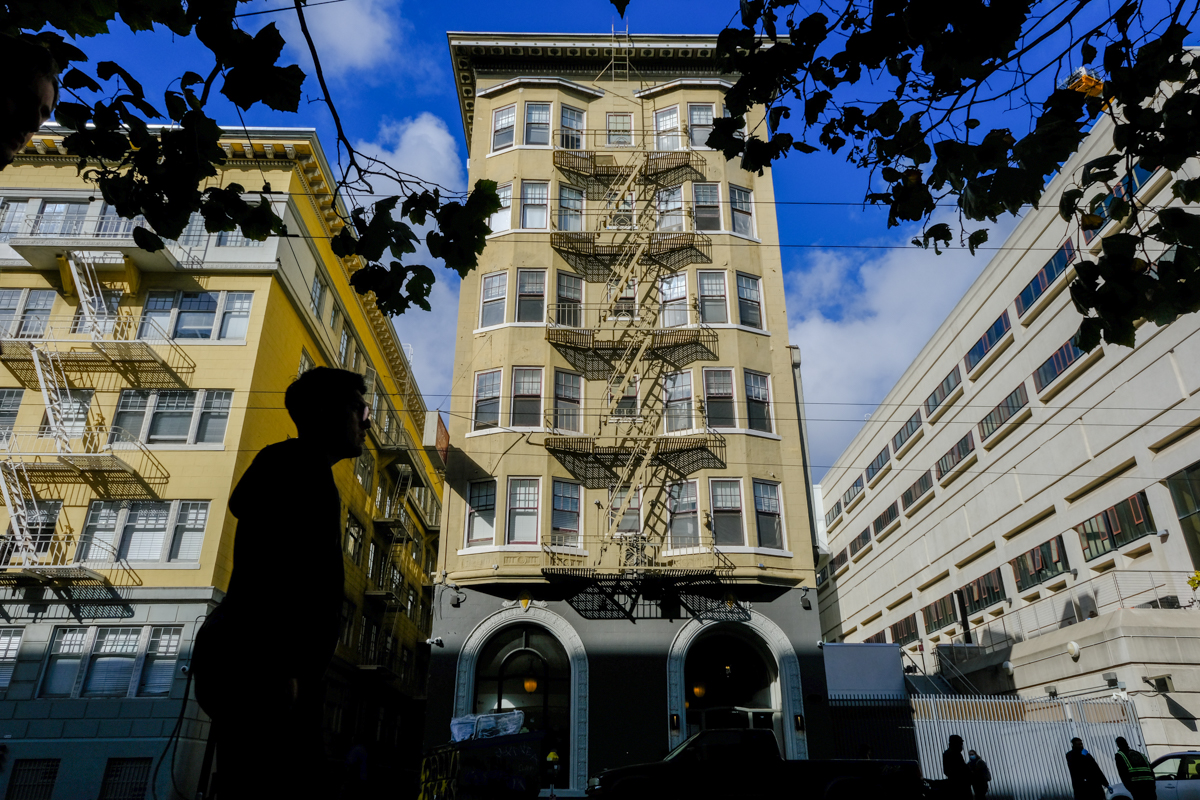The city’s “Shelter in Place” program—a Covid-era effort that transformed hotels into homeless shelters—ended in December, leaving a controversial legacy in its wake.
To many, the program was seen as a success for quickly housing thousands of people who would otherwise have slept on the streets or been at higher risk of catching Covid in crowded living conditions. But some say that a seeming lack of oversight led to poor outcomes for clients, damage inside of the hotels and turmoil in the surrounding neighborhoods.
The program temporarily housed over 3,700 people in two and a half years, according to the SF Department of Homelessness and Supportive Housing. The availability of the hotels increased the productivity of outreach efforts, according to Sam Dodge, the director of the Healthy Streets Operation Center. And medical outcomes among the program participants also improved, according to a study from UCSF.
But despite a promise from Mayor London Breed to permanently house all of the program participants, at least 811 of the hotel guests ended up back on the streets or to “unknown destinations.”
“A lot of vulnerable people got put out,” said Jennifer Friedenbach, executive director of the Coalition on Homelessness. “There’s this big chunk of people that they really don’t have any idea what happened to.”
A city data dashboard shows that 131 people were asked to leave the hotels due to bad behavior, but those people were left without any mechanism to dispute their eviction.
In the city’s traditional shelter system, which has checks for all evictions, 26% of evicted shelter guests are given a second chance or have their eviction overturned.
Friedenbach said that the urgency to house people during Covid led to many successes, but the rushed hiring process led to a mixed bag of outcomes for clients.
Some of the hotels, particularly in SoMa, became notorious among neighbors for attracting drug activity, while nearby businesses saw a surge of theft and vandalism. The city is now facing lawsuits from two of the hotel owners while two others have filed for damage claims over the state of the buildings that were returned to them.
Earlier this year, the city requested $259.4 million in reimbursements from the federal government for the program.
In response to the neighborhood complaints, the homeless department tapped the Five Keys nonprofit to deploy street ambassadors around the buildings. But residents say they saw little impact from the service.
However, there were some sites that saw success in transitioning their clients to more permanent options by placing priority on case management services. The successes left many feeling that there was potential in the model if there were more attentive providers, armed with better planning.
